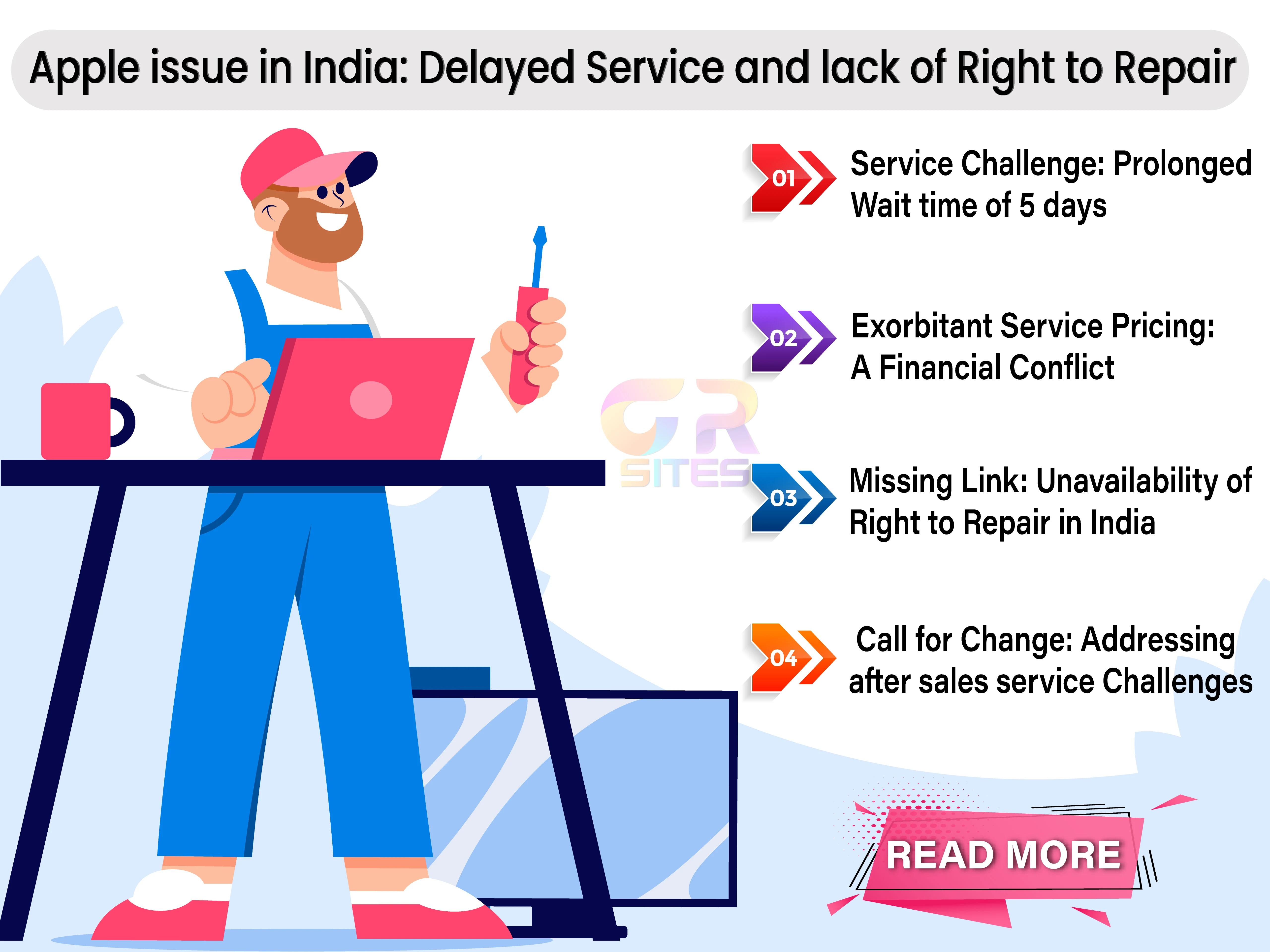In the bustling landscape of India's tech market, Apple has soared to unprecedented heights, cultivating a massive user base, and establishing itself as a prominent player in late 2023. However, amidst the accolades, there lurk two significant roadblocks that Apple seems hesitant to tackle. This article delves into the intricacies of these challenges and proposes a compelling solution that could revolutionize the Apple experience for its users in India.
The Need for Support Speed: Apple's Service Challenge
- Long Service Options and the Waiting Game: One of the major stumbling blocks for Apple users in India is the prolonged service options. Even with the protective umbrella of Apple Care+ or the comforting shelter of warranty coverage, users find themselves in a disheartening waiting game. Imagine a scenario where your trusty iPhone or MacBook encounters a glitch, and the prospect of it being back in your hands takes a staggering five working days. In a world where our daily lives are intricately woven with the threads of mobile devices and laptops, a five-day hiatus seems not just inconvenient but almost archaic.
- The Cost Problem: Exorbitant Service Pricing - Adding salt to the wound is Apple's exorbitant service pricing. The irony is substantial – the cost of repairing a beloved Apple device often dances worryingly close to the price of a new Android counterpart or buying a new Apple product. The financial conflict between opting for a repair and simply replacing the device with a shiny new alternative or new affordable product raises eyebrows among consumers. In this high-stakes game, Apple's service charges seem to echo louder than the sleek symphony of its products.
Locked Out: The Right to Repair Mystery
- Missing Link: Right to Repair in India: However, the plot thickens as we delve into the labyrinth of Apple's service dynamics. The absence of a 'Right to Repair' program in India further complicates the scenario. Unlike the West, where users can revel in the autonomy of repairing their devices with original parts, Indian consumers find themselves at the mercy of Apple's service centers. The third-party service centers, though eager to assist, are often handicapped by limited access to Apple's OEM products. This restriction leaves consumers with no option but to opt for first-quality parts, limiting the breadth of choices in the repair ecosystem.
- Advocating for Right to Repair in India - Empowering the Consumer: By embracing the right to repair in India, Apple can break free from the shackles of service monopolies. Users would no longer be bound by exorbitant prices or limited access to repair options. Instead, they would have the autonomy to choose the most convenient and cost-effective solution for their device troubles.
- A Win-Win Situation: Allowing users access to original device parts empowers them to take charge of their devices' well-being. Whether it's a quick fix at home or a visit to a trusted third-party service center, the right to repair hands the control back to the consumers. This not only enhances the overall user experience but also contributes to a sense of loyalty and trust in the brand.
Conclusion: A Call to Unshackle the Roadblocks
In the ever-evolving landscape of technology, adaptability is the key to sustained success. Apple, with its sprawling user base in India, must heed the call to unshackle the roadblocks that impede the seamless experience of its consumers. By addressing the prolonged service options and embracing a 'Right to Repair' program, Apple has the potential not only to retain its user base but to foster a stronger and more enduring relationship with the tech-savvy population of India.In the words of the wise, change is the only constant. It's time for Apple to embrace this maxim, unravel the knots that hinder its users, and step into a future where service is swift, costs are reasonable, and the power to repair lies firmly in the hands of those who wield the devices with unwavering loyalty.


